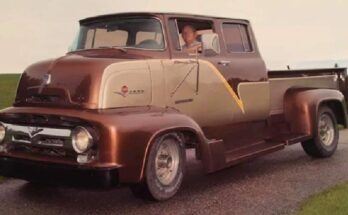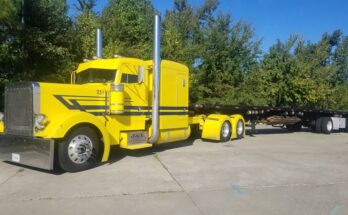Click here to return to Part I of this article
Since hotels were expensive in those days and towns were friendlier to traveling salesmen and unaccustomed to families, RVers began modifying campers to sleep in them. And cook their meals.
Companies began adding equipment to make them more comfortable like stoves and beds.
Henry Ford, inventor of the Model T, was among people who helped popularize campers in the early years.
A major difference was that many celebrity campers in those early days stayed overnight in tents.
The next move was perhaps predictable.
Auto campers started heading for Florida in the winter.
So-called “Tin Can Tourists” became popular in the 1930s,
For a while, anyone associated with the industry got the “tin can” designation.
We know that camping began to catch on in the 1920s when The New York Times reported that about half of the 11 million vehicles on the road were used for camping.
Campgrounds designed for tourists began in the 1920s. Some of them came with amenities such as golf courses. And even electricity.
The US depression that started in 1929 helped the industry in a sad way: some people who lost their homes moved into campers.
That helped create a boom in sales.
In 1936, the New York Times estimated there were 100,000 trailers on the road. “A new industry is rapidly coming to the front,” the paper said.
One of those manufacturers was the Covered Wagon Company in Michigan. It was the first to build trailers on a large scale.
Naturally enough, they started using the same production techniques of the automobile industry. Its founder, Arthur Sherman, has been called The Father of the RV Industry.
And Elkhart? It began emerging as the center in 1933, according to Hesselbart. That was when the Chicago World Exposition first featured a trailer industry exhibit. That so impressed some Indiana state residents that they began making RVs.
Soon, there were 300 manufacturers within a few miles of the city. Elkhart was being called “The Trailer Capital of the World.”
But not just there.
In Southern California, Wally Byam founded Airstream in the 1930s. He began by building his own trailer and selling the plans for $1 each through Popular Mechanics magazine.
There were other companies like it, but Airstream’s streamlined metal design outlasted most of them.
Another familiar name in the industry, Winnebago Industries, started production from a former trailer factory in 1958. They began selling for as little as $5,000 from the Forest City, Iowa factory.
Another famous company, Fleetwood Enterprises was created in the 1950s. Founder John Crean is given credit for introducing Venetian blinds for trailers. The California based company became so successful they sold $1 billion in manufactured homes and RVs in 1989,
The RV business has had its ups and downs since then.
Henry Ford’s Model T has a firm place in American history. When production started on October 1, 1908, it introduced mass production and opened travel for just about everyone in the country.
The model was variously known as the “Tin Lizzie, T Model Ford, Model T, T, Leaping Lena, or flivver.”
By 1918, half of all the cars in the US were Model Ts. Not much longer after that, Ford made his famous statement about the car’s color.
“Any customer can have a car painted any color that he wants so long as it is black.”
The Ford Model T was named the most influential car of the 20th century in the “1999 Car of the Century” competition, ahead of the BMC Mini, Citroën DS, and Volkswagen Type 1.With 16.5 million sold it stands eighth on the top ten list of most sold cars of all time as of 2012, according to Wikepedia.
The history of the RV goes back even farther than a century when you consider that the covered wagons seen in western movies may have been the forebears of the movement. A company called Covered Wagon Travel Trailers in the 1930s became one of the largest manufacturers of RVs until it became a casualty of World War II.
Information about that company and many others, including the Model T’s role, is on display at the museum.
One other “can’t miss” for those who make it there:
The once-famous actress Mae West owned a 1931 Chevrolet “house car” on display at the museum.
No, she didn’t drive it herself. She had a chauffeur who regularly took her from home to the movie studio.
By David Wilkening
Return to part on (click here).
 " >
" >


